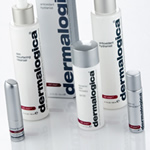 We are all familiar with the signs of ageing skin: wrinkles and fine lines, irregular skin tone, loss of firmness and elasticity… These are signs that many of us dread and that most of us will try to slow down.
We are all familiar with the signs of ageing skin: wrinkles and fine lines, irregular skin tone, loss of firmness and elasticity… These are signs that many of us dread and that most of us will try to slow down.
Until fairly recently, scientists were not aware of the biochemical mechanisms at the root of these changes; now they have been identified, however, it is easier to understand how they can be controlled.
There are three main biochemical mechanisms that lead to skin ageing:
1. Reactive Oxygen Species (a.k.a. free radicals). They are oxygen molecules produced by exposure to UV rays and pollution. They have been proven to destabilise skin cell molecules and attack collagen and elastin fibres. The result is skin that is unable to repair itself efficiently and the appearance of lines.
2. Matrix Metalloproteinasis (or, MMPs)are proenzymes secreted by the body that require extracellular activation which comes in the shape of our old friend the sun, although inflammation can have a similar effect. Once activated, they attack the collagen fibres in the skin and interfere with collagen synthesis.
3. Advanced Glycation End-products (AGEs) are produced when collagen interacts with glucose. Now glucose is essential in providing energy for our cells, but AGEs can cause skin to develop the signs of ageing we all recognise by accelerating the formation of fine lines and wrinkles, and reducing skin cell renewal and elasticity.
Luckily, Dermalogica have developed skincare products specifically designed to target these three causes of skin ageing, and the next article will look at how these AGE Smart products can help.
